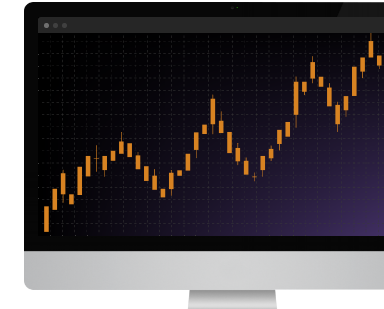
The beginning of the article you can find here.
While the design and construction of an index can be challenging enough, an often overlooked aspect of index creation is the management required to keep indices up to date and relevant. This includes the maintenance of redundancies to ensure continuous service in real-time, as well as the storage and normalization of historical data.
Management also involves monitoring the constituents for changes, as well as routinely rebalancing and re-weighting components where appropriate. Another aspect of index management is the creation of Index Management Platforms (IMPs) allowing users to analyze data, compare different constituents, and visualize the results in an effective manner. All of the above require experienced development teams with expertise in each specific field, such as the ability to support APIs in a variety of languages and the creation of front-facing applications and interfaces, whether they be client platforms or internal dashboards.
To say nothing of the hardware and software infrastructure required to keep price feeds, aggregators and calculation engines performing continuously. It’s important to understand that the finished index product is much more than just the methodology used in its calculation, the management of indices comes with its own, not insignificant, technical overheads.
Custom Benchmarks from dxFeed
Launching a new index product entails a number of design and methodological concerns. It also requires careful collection and normalization of disparate data in different formats and the creation of calculation engines with testing and weighing capabilities. These must be integrated with existing technology stacks and external publishing and distribution firms. In the case of the financial industry, they will more often than not require the index creator, or calculation agent, to be a regulated entity that’s compliant with IOSCO (International Organization of Securities Commissions) and EU BMR (European Union Benchmark Regulation) principles.
Despite the growing number of index products being launched every year, there’s a great deal of room for innovation in a constantly evolving marketplace. At dxFeed, we’ve had the privilege to work on a number of high-profile projects that have highlighted the need for quality indexation across a variety of domains. Below we present a small selection of examples.

Innovative Exchange Products
With the help of a partner like dxFeed, exchanges and benchmark providers seeking to differentiate their offerings can create unique indices that fill certain underserved niches. These solutions can add value to traders, but also form the basis of novel derivative products. Examples of this type of product include the BitVol Bitcoin Volatility Indices, which measure the expected volatility of Bitcoin prices over given periods of time. Or a custom index composed of 75 small-cap stocks from five different sectors of the economy. Another example of such an index can be an index that tracks the changing corporate tax rates imposed by governments, or an index that tracks the continuous yield on, for example, 10-Year US Treasuries.
Reference Prices for OTC Markets
In the OTC space, where instruments such as foreign exchange and cryptocurrencies
are traded in a decentralized manner, there can be hundreds of different venues and data sources. In such an environment, the consolidation of the disparate bid/ask prices into reliable reference aggregate price feeds can be valuable to brokerages and traders alike. At dxFeed, we have combined multiple sources feeds on individual currency pairs into composite feeds that maximize quality and reliability, while dampening outliers.
In a similar vein, composite indices featuring customizable baskets of assets, such as select US equities, can be constructed and offered as a foundation upon which to construct tradable products. These baskets can include anything from the well-known FAANG stocks (Facebook, Amazon, Apple, Netflix, Google) popular among newcomers to stock trading, to selections of bitcoin alternatives in the cryptocurrency space (altcoins), or even collections of assets that follow certain themes, such as gold miners, or firms involved in green technologies. The availability of such indices and the tradable derivatives give rise to, confer competitive advantages to brokers in an industry where product differentiation is key.
Macroeconomic Research for Academic Institutions
As mentioned above, the value of indices is not just limited to the world of finance. They can also be extremely useful tools in socio-economic research, and the insights they yield can form the basis of policy changes that can be far-reaching in their impact. In collaboration with the University of St. Gallen, dxFeed has helped create the Elite Quality Index (EQx), which measures the degree to which the elites and the business models they promote, help to create value and aid in human development, or whether they extract value through rent-seeking practices. The Index Management Platform we have contributed to the project, allows researchers to easily customize the datasets they want to analyze, permitting deep dives into individual country sheets and allowing formerly laborious processes that had to be done by hand to be automated.
Custom Benchmarks for Investment Management
Other potential use cases dxFeed has been working on including the creation of fully customizable internal benchmarks for the investment industry. Whether this is for hedge funds, mutual funds, or family offices, the construction of customizable benchmarks allows these organizations to fine-tune and tailor their investment processes rather than having such a critical area of their businesses depending on older, cruder indexation methodologies they have no control over. Custom solutions that allow for end-to-end management of the process confer all manner of advantages on these firms, including the ability to adapt to changing market conditions while being able to back-test a variety of fund strategies and calculate the costs associated with reallocation in different market conditions.
Final Thoughts
Even though extremely challenging times, capital markets will continue to play an increasingly vital role as human beings continue to come together and create value in new and unique ways. Financial markets know no racial, gender, geographic, or political boundaries, and are among the most liberating inventions in the history of humanity, having been responsible for lifting more people out of poverty and moving our species forward in hitherto unimaginable ways.
They are at the same time brilliantly simple by design, yet they continually offer complex ways to present data services as a wide variety of products designed for all audiences. Through the construction of index solutions that follow the criteria and parameters laid out above, companies can bring the accessibility and ease-of-use of broad, market-basket index investing to mass investors, all with the safety and security of fully regulated financial market vehicles and the full confidence of both institutional and retail investors.
The first part of the article is here.